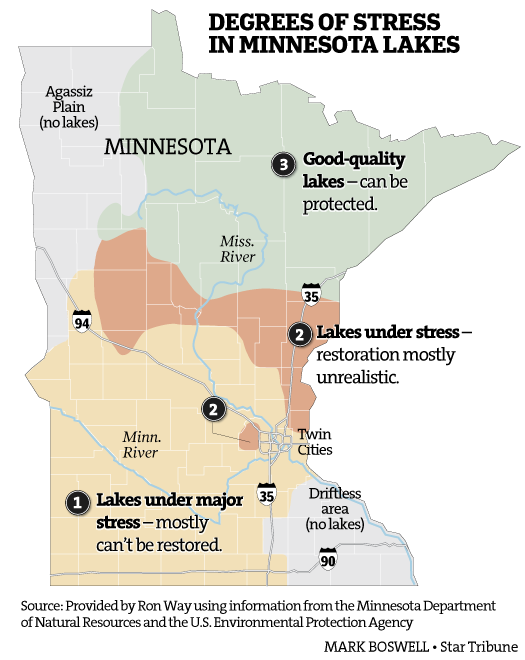“From Runoff to Ruin”
Excerpts from: From Runoff to Run: The Undoing of Minnesota’s Lakes
Inspirations for masks:
- Native species for rain gardens and natural buffers between agg fields/lawns and lakes
Person to interview/add to failure support group: Peter Sorensen @ University of Minnesota; Jim Erkel, attorney for MN center for Environmental Advocacy
i.e.: ““It’s death by a thousand cuts,” said Peter Sorensen, a fisheries expert at the University of Minnesota and one of a number of scientists who consider the damage irreversible, given the added realities of a warming climate and a stiff political resistance to land-use changes needed to restore central Minnesota’s lakes.”
“Agriculture has drained or poisoned the prairie lakes and potholes of southern and southwestern Minnesota. Forget about them; they’re gone.”
“Over the last half-century, quaint lakeside cabins have been transformed, by the thousands, into mega-homes with large fertilized lawns running to the water’s edge. Nearby towns have been converted to suburban-style strips with vast parking lots. Add in all the golf courses, faulty septic tanks and riprap barriers that replace natural shoreline vegetation, and you begin to realize how an exponential increase in unfiltered runoff has remade these lakes into a nutrient soup that’s quite literally suffocating fish and other native species within them.”
“The damage came less from numbers, however, than from careless design. The real-estate market and local governments treated lake country not as a delicate ecosystem but as an ordinary template for suburban excess.”
“But when natural cover falls below 60 percent, lakes begin to deteriorate.”
“There’s no mystery about what’s needed: larger setbacks for new lakeside homes, natural buffers between lakes and yards, a prohibition against nitrogen fertilizers, frequent inspections of septic systems, and incentives for traditional town design that limits the size of paved parking lots while encouraging native plants, rain gardens, maximum tree coverage and permeable pavers. In short, what’s required is a built environment that harmonizes with nature rather than defying it.”
“The need for rules is perhaps best illustrated by a recollection from Jim Erkel, an attorney for the Minnesota Center for Environmental Advocacy. When, in 1996, officials in Two Harbors asked the owner of a new fast-food restaurant why he had cut down a grove of beautiful pine trees (planted by Boy Scouts in the 1930s) near his new store while he’d been far more careful about the environment and history around his Duluth store, the owner replied that Duluth had rules and Two Harbors did not.
“It was a light-bulb moment,” Erkel said. “He cut the trees because the town let him. That pretty much explains everything.”
